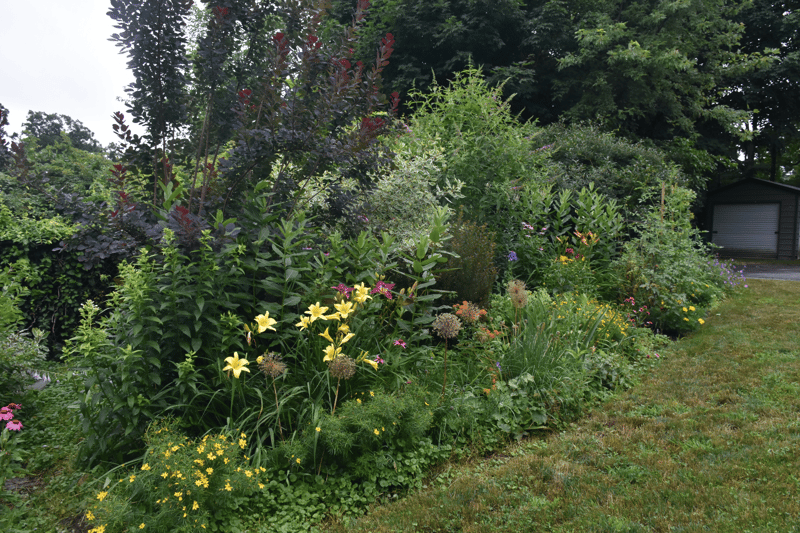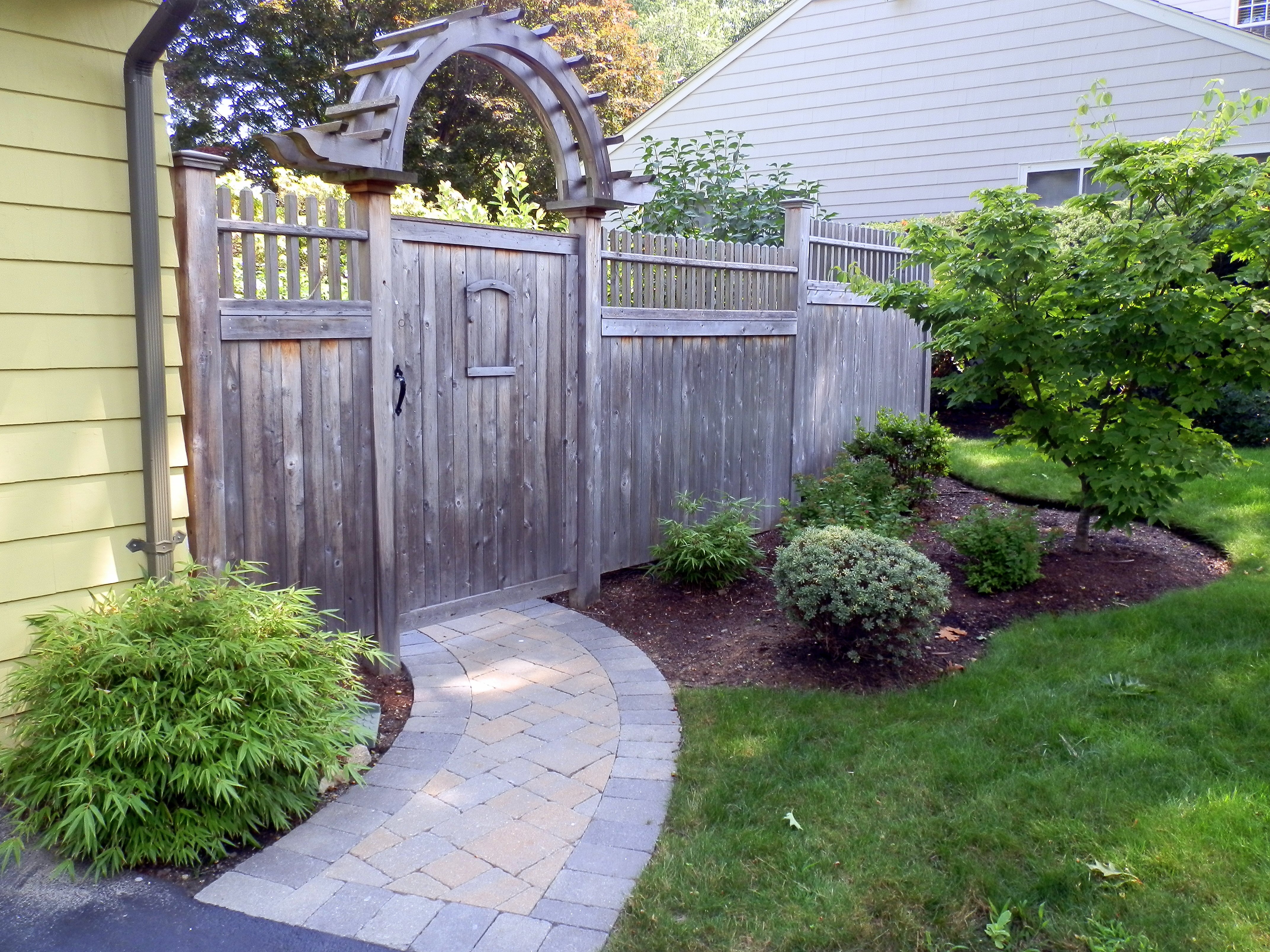There’s no question about it – New England can be a tough place to garden. Whether it’s flowers or vegetables, pleasure or produce, New England’s soil and weather can take a toll on both the garden and the gardener. So what’s the best approach to minimize risk and toil and maximize growth, blooms, and gardening pleasure?
Plan your work and work your plan.
The best offense is an organized one. So start by carefully planning your garden to take advantage of any positive factors such as location, shelter, sunlight, good soil and moisture – anything that will give you and your plants a leg up and a solid head-start.
Start by obtaining a New England gardening calendar. These handy documents have helpful information about gardening, such as what to plant and when. The UMass extension program garden calendar is a good one – it offers tips on getting started and achieving success, with an emphasis on the basics, raised beds, and container vegetable gardening. 
Let’s get started.
If you’re eager to get started on this year’s gardening, remember that, after all, this IS New England. If you haven’t done so already, now’s a good time to inspect any structural elements in your garden, such as raised beds and permanent or semi-permanent decorative containers that will hold plants this season. You don’t want to go to the trouble and expense of preparing and planting in those structures, only to have them quickly fall apart with use because they got damaged over the winter.
Also, clean up your beds, removing dead or weak plants to make room for new, robust ones. Rake out any decaying growth laying on the ground that can harbor plant diseases and harmful pests. Cut back certain perennials to promote good plant health and accommodate new growth.
As you plan your garden, consider using appropriate native plants, both to help them continue to thrive in our region as well as to minimize their maintenance. Plants that grow naturally in your neck of the woods should be happy to grow in your garden with little attention – your local garden center should be able to help you select the right native plants for your specific environment. See the UMASS North American Plants for New England Gardeners as a reference. Note that some spring wildflowers in New England generally like rather cool soil conditions and often die back as the heat of summer approaches. Applying a layer of mulch over the root zones will keep the soil cool and moist, prolonging the foliage, sometimes through the entire summer.
If you’re like many gardeners coping with the pandemic, you may be considering raising fruits and vegetables as a way to ensure your family has a secure source of high quality, healthy produce throughout the growing season and beyond (if you’re into canning and other methods of preservation). Now is a good time to get seedlings started indoors so you can plant them as soon as outside conditions allow. Plants such as lettuce are early-season favorites and can often go into the ground around now. See our reference article titled “Beginners Guide to a Massachusetts Vegetable Garden.”
If you’re more of a decorative gardener with an appreciative eye for beautiful blooms and creative, attractive gardens, here are 10 tips for beautiful gardens that can help spur your imagination and inspire you to get started:
Top 10 Beautiful Spring Gardening Ideas
-
- Highlight part of your property - If you have a large lawn that requires a lot of mowing, consider converting part of it to landscape centerpiece, carving out a space for layered growth, such as groundcover plants and low growing flowers up front, followed by shrubs and small, decorative trees that all draw the eye upward with a variety of foliage and heights.
- Add a focal point - Center your plants around a single, dominant item such as a sundial or bird bath, with plants and patterns of foliage radiating out from that focal point. It requires little additional effort, but provides a huge visual payoff.
- Create a special nook - Perhaps your existing garden has an area that just never seems to do well. Maybe it’s too shaded or too dry, or too something. Rather than keep fighting with it, turn it into a secret little contemplation area. Put in some pavers, flagstone, pea stone or other hard surface that will accommodate some seating. If plants won’t grow in the ground there, consider adding a decorative, colorful planter to grow plants on the area to help beautify it.
- Add some whimsy - Personalize your garden and make it unique with some fun focal points. An artsy piece of sculpture such as a whimsical metal animal, some classical or modern statuary, or a large, colorful planter are all eye-catching, fun ways to express yourself.
- Repurpose old objects - Old window frame and doorways make great planters and gateways to your garden. The right old implement, tool, or antique equipment can add a great decorative touch as well as lend trellis-like support for tall-growing plants.
- Add a pop of color - Be sure to mix and match your plantings to create a colorful palette of foliage and blooms. By choosing complementary annual and perennial plants with different flowering schedules, you can assure yourself of having bright, beautiful colors in your garden all season long.
- Put in a pathway - Nothing says “take a moment to slow down and smell the flowers” quite like a meandering path that winds through your plants and landscape. Make it rustic and natural with wood chips or stone or go for a more dramatic and structural look with manufactured pavers or other manmade materials.
- Create a welcoming garden entrance - Whether it’s a whimsical or imaginative gate that might remind one of a fairy village or a more formal and inspiring entrance with posts and lanterns, an attractive entry says “Welcome, please come in and look around.”
- Simplicity speaks volumes - If you’re someone who likes simple, creative touches that take little or no effort but provide a big bang, consider something as simple as adding a large, complementary-colored vase or other object to a plant bed that highlights its dominant color or colors. It draws attention and looks great, but takes zero effort.
- Create garden “zones” with landscape screens - Use one or more of the many different landscape screens available to “wall off” specific areas of your garden and create “living rooms” – that is, zones of complementary living plants, such as an area of flowering shrubs, or different grasses.

There is certainly lots to do in the garden during the spring in New England. And while we can have more than our share of cold, windy, or rainy days they’re useful for imagining and planning your garden so when the warm, sunny days are here, you can get out there and make those plans a reality. Happy gardening!
We hope you enjoyed this article and it has spurred your landscape creativity. If you would like to drill into landscaping, please feel free to read our article titled "13 Insider Tips to Creating a Beautiful Contemplation Garden."













